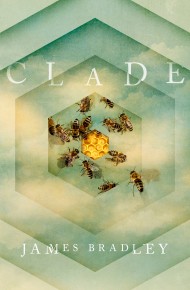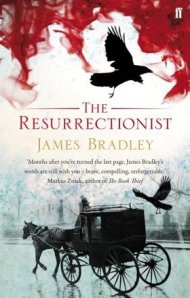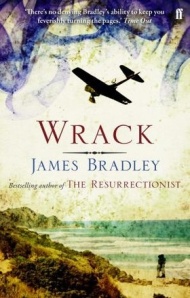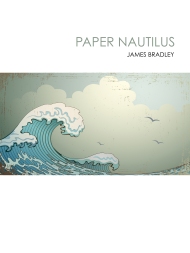The Deep Field
 The Deep Field is my second novel, and it remains my favourite of the three novels I’ve published so far. Originally published in Australia in 1999, it went on to be published in the UK, the US and to be translated into several languages. It also won The Age Fiction Book of the Year Award, was chosen for The Sydney Morning Herald’s Best Young Australian Novelists and was shortlisted for a number of other awards, including the Adelaide Festival National Fiction Award and (something I was always very proud of) the Aurealis Award for Best Science Fiction Novel.
The Deep Field is my second novel, and it remains my favourite of the three novels I’ve published so far. Originally published in Australia in 1999, it went on to be published in the UK, the US and to be translated into several languages. It also won The Age Fiction Book of the Year Award, was chosen for The Sydney Morning Herald’s Best Young Australian Novelists and was shortlisted for a number of other awards, including the Adelaide Festival National Fiction Award and (something I was always very proud of) the Aurealis Award for Best Science Fiction Novel.
The original publisher’s blurb reads:
“Haunted by the disappearance of her twin brother in Hong Kong, photographer Anna Frasier returns home to Sydney. Beginning a photographic study of fossilized shells, she meets Seth LaMarque, a blind paleontologist, and his sister Rachel, a solicitor working with the homeless.
“As Anna’s work proceeds she finds herself more and more involved in Seth and Rachel’s lives. But even as she is drawn into their worlds, her brother’s absence binds her to a past she can neither escape nor resolve until she returns to Hong Kong to find him.
“Set just over a decade from now, The Deep Field evokes a world much like the present yet subtly and unsettlingly different. At once steely and compassionate, it weaves elements of photography, philosophy and science together into a meditation on love, time and loss.”
Buy The Deep Field at Amazon.com, Amazon.co.uk, Abebooks (worldwide) or Books and Collectibles (Australia).
More information:
In 1999 I wrote this article about the writing of the book.
When I was writing The Deep Field I was keenly aware of was how improbable the character of Seth, the blind paleontologist seemed. Then, about three years after the book was published, I received a letter which suggested in passing that I’d based Seth on a real person called Geerat J. Vermeij, a professor at the University of California. I’d never heard of Professor Vermeij, but after a bit of research I discovered that not only did he exist, but he was indeed blind, and perhaps most remarkably, was an important figure in the field Seth was supposed to be working in. It was a discovery I found disconcerting, to say the least, but I later wrote to Professor Vermeij, who was extremely gracious about the whole situation.
It’s not a situation that would be likely to arise today, when my first google search on fossilized ammonites would probably throw up Professor Vermeij’s name, but for all its techno-trappings, The Deep Field is a book composed in the darkness before the internet’s ubiquity, based on old-fashioned, hard copy research materials such as books.
Awards:
The Sydney Morning Herald Best Young Novelist 2000
The Age Fiction Book of the Year 1999
Shortlisted for The Courier-Mail Book of the Year Award, the Aurealis Best Novel Award (Science Fiction category and the Adelaide Festival National Fiction Award.
Reviews:
“The Deep Field reaches imaginative heights not often encountered in novels these days.”
Andrew Riemer, Australian Book Review
“His prose deftly captures both immediate sensory perceptions and global overviews, and his vision of our decade-down-the-road future is a stunner”
The New York Times
“Bradley is no simple realist. The Deep Field is what used to be called a “novel of ideas” but which is these days labelled “post-modern”. Bradley is one of those omnivorous novelists whose interests mend from philosophy to science, ontology to palaeontology.”
The Bulletin
“the crystalline beauty of a shell”
Time Magazine
“The Deep Field is a very potent, off-beat book full of sap and sassiness. Bradley has the courage of his pretensions, which are semi-monstrous, but what stays in the mind are not the pretensions but the talent which sustains them. He comes across like someone dressed up, gorgeously and ridiculously, as a spaceman or a maharaja. People do not see the extravagance of the costume but only the beauty of his eyes and the fineness of his bone structure. But if not for the dressing-up, would the eyes have that look or the chin that tilt? . . . He can write and he can keep you reading late into the night.”
Peter Craven, The Sydney Morning Herald
“A memorable novel, which, with its stylistic grace and ease, lingers long in the imagination.”
Debra Adelaide, The Australian
“An incredibly compelling tale, resonating with beauty”
She magazine

![Reblog this post [with Zemanta]](https://i0.wp.com/img.zemanta.com/reblog_e.png)








Trackbacks & Pingbacks